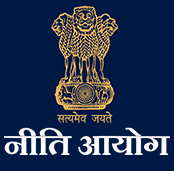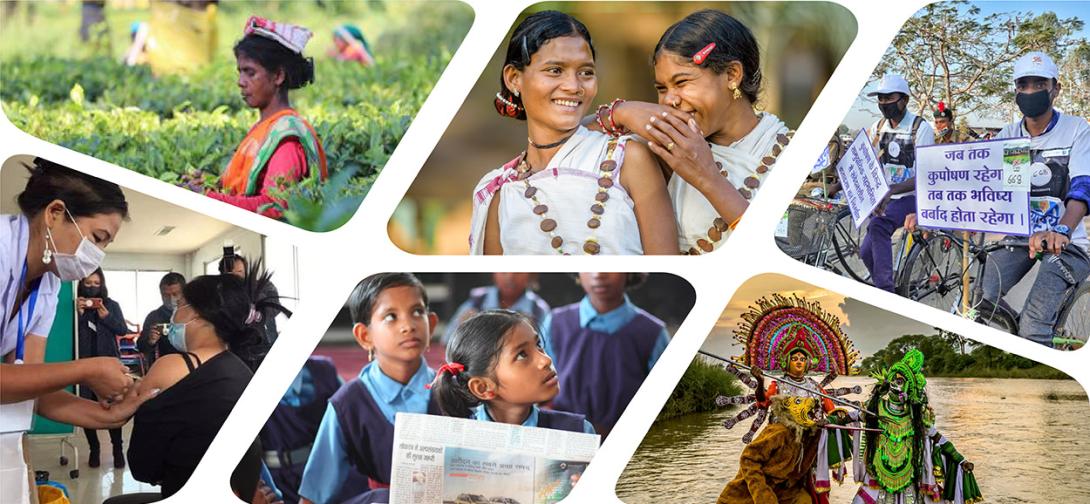Covid-19 in India: A Swot Analysis
Lockdown for India was both a historic and necessary step for countering the spread of the virus. In the meantime, the government undertook many initiatives to defend the country against covid-19. However, to devise an effective strategy for fighting covid-19 while minimizing risks and maximizing results, it is crucial to identify the internal and external factors correctly. A SWOT analysis has been done to assess India’s current position in tackling the pandemic.
This analysis examines India’s Strengths, Weaknesses, Opportunities and Threats on the covid front and aims to come out with recommendations that can help battle the crisis. This will also act as the foundation for various stakeholders to pursue and convert opportunities into strengths and prevent weaknesses from turning into threats.
Strengths
Institutional (Government and Governance) and Infrastructure
- Existing infrastructure like schools, railway coaches, hotels, offices, etc., were converted into isolation wards
- India is the largest producer and supplier of hydroxychloroquine, a prospective drug for treating covid-19
- Rapid measures were undertaken such as imposing travel restrictions and lockdown that enabled India to balance its supply and demand
- All domestic/international travellers and offices are mandated to undergo a compulsory thermal screening check
- Transparent communication by the leadership led to compliance of requisite directions given to the masses to slow down the spread of covid-19.
Academicians and Practitioners
- The medical and health system is gradually gearing up to take on the new challenge
Innovation and Economy Drivers
Huge repository of start-ups, intellectual property, platforms generated to fight the crisis*
Weaknesses
Institutional (Government and Governance) and Infrastructure
- Lack of testing kits and relief materials like medical equipment, PPE, masks, and ventilators
- Challenge in manufacturing testing kits and relief material indigenously, making us dependent on imports
Community and Civil Society
- Lack of awareness among specific sections of the society
- Psychological barrier relating to isolation: people fear the quarantine conditions
- Highly susceptible to diseases and poor immunity (India ranks 135 out of 195 on UNDP Health Index )
- High incubation period ranging from 1 day to 14 days
Academicians and Practitioners
- Shortage of emergency healthcare infrastructure and professionals:
- Doctor to patient ratio: 1:1445
- Hospital beds to people ratio: 0.7:1000
- Ventilators to population ratio 40000: 1.3bn
Innovation and Economy Drivers
Lack of flexible employee working arrangements
Opportunities
Institutional (Government and Governance) and Infrastructure
- Create a robust third-tier structure of governance (at panchayat/gramin level) for monitoring and spreading awareness
- India can emerge as a world leader (setting example for other nations on how to fight the crisis)
- Development of standard operating policies and procedures in the form of emergency preparedness and response plan for the present and future outbreaks*
Academicians and Practitioners
- Development of a vaccine/antidote for covid-19
Innovation and Economy Drivers
- Involve start-ups, MSME, corporate R&D and academic institutions for providing innovative solutions for fighting covid.
Explore the allied sectors that became prominent due to the covid-19 pandemic, including technological interventions like video conferencing for carrying out work from home and education.
Threats
Institutional (Government and Governance) and Infrastructure
- Failure in contact tracing may lead to worsening of the present situation and increase in the probability of being hit by the second wave of covid-19*
Community and Civil Society
- Coronavirus has attained level 3 of the epidemic, i.e. community transmission stage
- Breach of lockdown protocols and social-distancing norms
- Increased chances of spread of infection (high population density with 27.9%, people lying below the poverty line)
Academicians and Practitioners
- Higher chances of frontline workers contracting the disease
Innovation and Economy Drivers
- Dwindled the economy and overall growth of the nation
- Impact on stock markets as well as a global, national, and local trade
Worldwide lockdown catalyzing slow down into recession leading to increase the unemployment and poverty levels*
Comparative Study of Nations
A comparison of selected nations across different positions on the covid curve has been made to analyze the lessons and the learnings that can form the base for framing the covid-19 recommendation matrix for India.
Kindly note that the covid curves illustrated below have been categorized as (i) exponential curve, (ii) flattening curve and (iii) bell curve. They are a representation of how effectively different countries are handling the outbreak.
Comparative study
- Covid curve
- (based on WHO active cases estimate, as on 3 May 2020 )
- Learnings
- Lessons
South Korea
- Strong and fast early response
- Highest density of hospital beds
- Well-implemented universal healthcare coverage
- Transparent and open communication
- Strong epidemiological surveillance and contact-tracing capacity
- Early implementation of remote work and site-monitoring initiatives
- Learning from past experiences like MERS-CoV
- Lack of severe implementation measures such as a lockdown
Russia
- Have a high reserve of testing kits
- Relaxed regulations to allow research in biosafety level (BSL) 2 facilities
- Slow to recognize the pandemic
- Initially underestimated the forecasted numbers
- Distrust among the population and non-abeyance of early days restrictions
Italy
- Lack of early and mass testing
- Overburdened healthcare system
- Lack of crisis management
- Lack of proper communication and transparency
United States of America
- Strong healthcare infrastructure
- Lack of proper communication
- Lack of early and mass testing
- Lack of awareness: downplaying the spread of the virus
- National unrest against the quarantine
China
- Aggressive quarantining and mass surveillance
- Coronavirus testing was easily accessible and free
- Large scale contact tracing
- Learnings from the past: SARS and MERS outbreak
- Lack of communication and transparency of the epidemic from its people and the world
- Built new hospitals in a rush, with some quarantine facilities collapsing
New Zealand
- Strong leadership
- Elimination strategy
- Completely sealed the national borders
- Effective in breaking community transmission through social distancing
Tips and Tricks for Flattening the Curve: Recommendations for India
Based on country-wise covid experience and the SWOT analysis, the below-mentioned strategies and recommendations have been formulated to counter covid-19 and effectively flatten the curve:
Covid-19 Recommendation Matrix
Opportunities
Threats
Strengths
Using Strengths to Maximize Opportunities
Institutional (Government and Governance) and Infrastructure
- Development of strong third-tier governance system (panchayat level, similar to Kerala’s governance model) for educating and monitoring people
- Carrying ahead intellectual repository created to fight the crisis into the post-pandemic world*
Academicians and Practitioners
- Making use of R&D ecosystem for rapid development of COVID-19 vaccine/antidote
Innovation and Economy Drivers
- India can take the lead in becoming the next favourable destination for housing business operations of Multinational Corporations.
Using Strengths to Minimize Threats
Institutional (Government and Governance) and Infrastructure
- Extending health assurance benefits to the larger masses
- Implementation of strong operating policies and procedures for present and future outbreaks*
Innovation and Economy Drivers
- Providing a policy boost to existing startups, MSME and manufacturing sector for uplifting the economy and employment generating
- Build investor trust by taking initiatives to promote Foreign Direct Investments.
Weaknesses
Using Opportunities to Minimize Weakness
Innovation and Economy Drivers
- Make use of start-ups, MSMEs and Indian labs for the productions of PPEs, testing kits, ventilators, etc.
- Develop necessary technical infrastructures to ensure smooth and flexible employee working arrangements to minimize job losses
Prevent Weaknesses Turning to Threats
Institutional (Government and Governance) and Infrastructure
- Ensure adequate infrastructure and protect our frontline workers and healthcare staff
- Find, isolate, test and treat to prevent the present situation from getting worse
- Specific actions to be taken for the people below the poverty line
- Expect and plan a rapid response to the rising number of cases to avoid pressure on the healthcare system*
Community and Civil Society
- Practice social distancing to protect the vulnerable
- Increase the frequency and reach of awareness campaigns to educate and help people overcome psychological barriers
Applicability of the Study Undertaken
This study focused on performing SWOT analysis for India and a comparative analysis of other nations, to come up with strategies and action points that can be readily adopted by different stakeholders.
This study sets a baseline for the below-mentioned stakeholders in defining the pathways to counter COVID-19 pandemic:
- Academicians and Practitioners (Healthcare Workers, Researchers and Scientists): This study will help academicians and researchers in aligning their ongoing and upcoming covid-19 research, since past studies have not touched upon this topic. Also, this will help the practitioners (healthcare workers) get an idea about the best practices followed by various nations, enabling them to design healthcare procedures in the most effective and efficient manner.
- Community and Civil Society: This study will help the community and civil society to remain safe from the disease and provide the necessary support to the government for countering the pandemic.
- Innovation and Economy Drivers (Business Owners, Regulating Agencies, etc.): This study will help provide a boost to innovation activities and economy drivers, to realign the balance of supply and demand, manufacturing sector, FDI, etc.
- Institutional (Government and Governance) and Infrastructure: This study will give policymakers a perspective into the best practices adapted worldwide, to help frame policies that will empower India to better handle the crisis at hand.
*Arshiya Mahajan and Himanshu Agarwal are Young Professionals, NITI Aayog. Views are personal.
 National Portal Of India
National Portal Of India 







